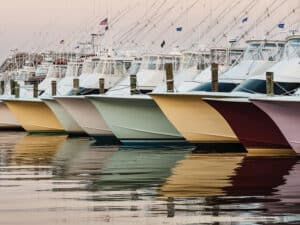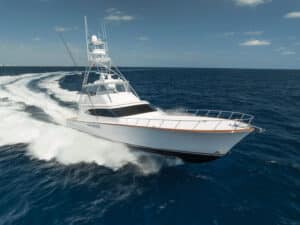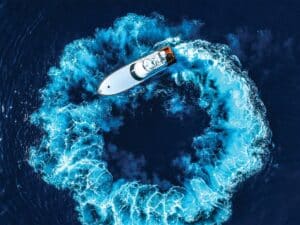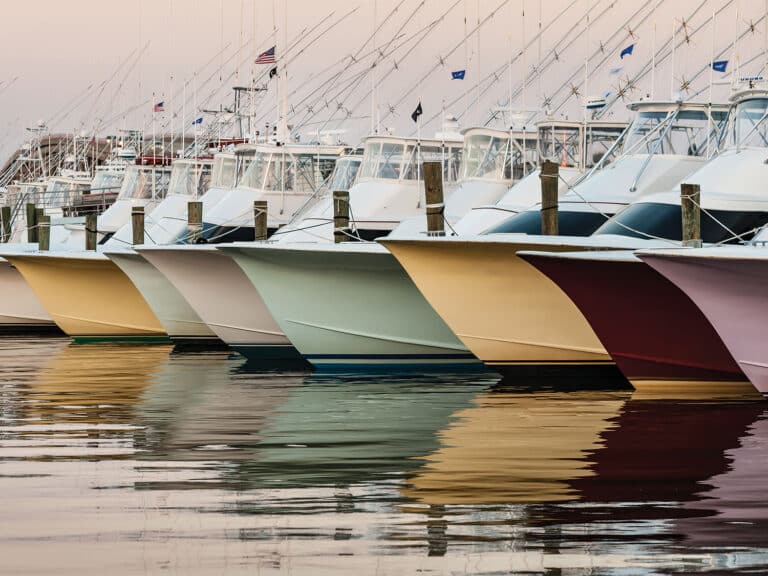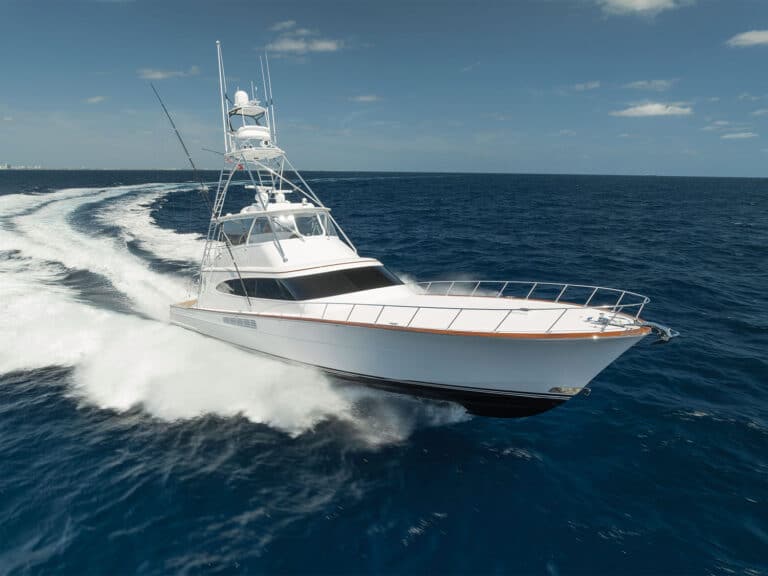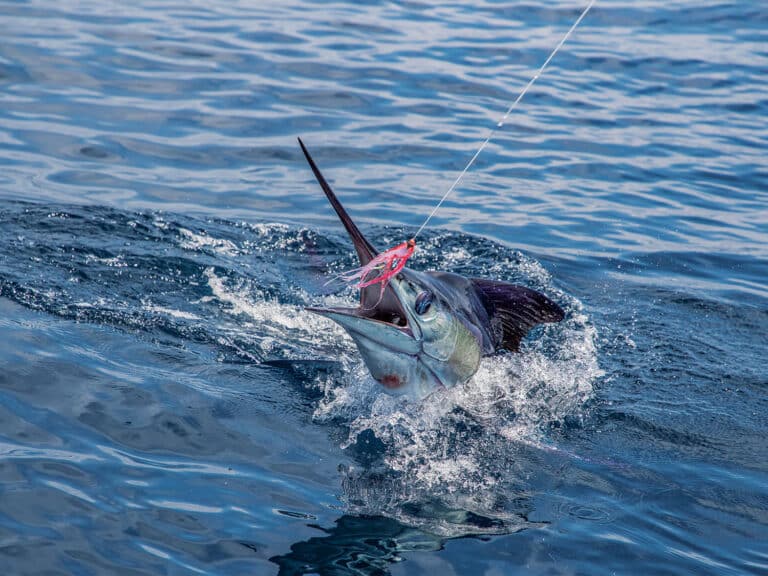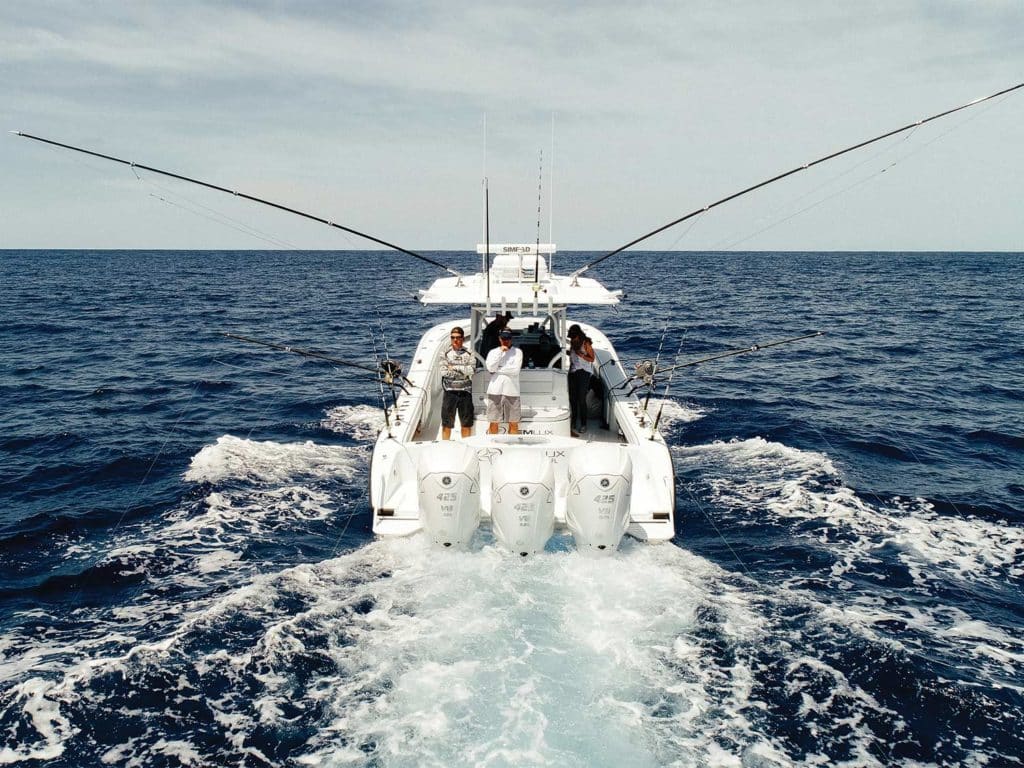
Large sport-fishing boats have always been the preferred choice for trolling over a smaller center-console. Not only do bigger boats provide a more stable platform, but the sheer width of the footprint also allows for a more flexible spread.
Trolling from a center-console has always been a challenge; they look like aliens out there with their riggers flopping around. But you make do with what you have and put out a good spread that effectively presents your baits. And after all, no one ever accused a fisherman of not being inventive.
Bigger Isn’t Always Better
The advantage of fishing from a center-console is the ability to fight a fish 360 degrees around the boat, or better yet, the fish can be chased down with the pointy end, which is invariably easier—and safer—especially in big seas.
Center-consoles, just like convertible bridge boats, are getting bigger every year. With a larger cockpit and stronger, more-prominent T-tops, the options for outriggers and hardware keep advancing. In the past few years, companies like Tigress Marine, Gemlux, Lee, Rupp and Taco have improved their options tremendously. The heavy-duty outrigger bases are more user-friendly, and the outrigger poles made from strong carbon fiber give you the needed length to increase your spread impression. Dredge boom designs are also advancing from several companies such as Ledge Logic, Gemlux and Tigress. Add a tower and you now have that once-envied higher vantage point.
So, how can you increase your center-console spread and still rig the outriggers in such a way to give you the advantage of full, 360-degree walk-around flexibility? Let’s find out.
I had a conversation with Capt. Scott Fawcett of Off the Chain Fishing Charters in Stuart, Florida, to get some real-world input on how he rigs his 32-foot Contender.
South Florida is probably the center-console capital of the world, and Stuart is one of the places that definitely has dredge-fishing dialed in. Fawcett, along with a few of the tackle companies, offered some solid advice on how to set up your boat for dead-bait trolling.
Watch: Check out this dredge footage.
Set Up for Success
One thing to take into consideration is the introduction of a dredge into the mix. In order to compete with today’s professional sport-fishing crews, a dredge is a necessity for dead-baiting. Since successful bait presentation is the most important issue, the setup is equally as crucial in keeping things running smoothly throughout the day.
Running your outrigger halyards to the covering boards in big-boat fashion has been standard operating procedure for a long time. It gives your rigger clips a good angle for both sending them out and retrieval, but you still have to get the rod around the halyard to get to the bow to fight the fish. So a lot of guys will run their pulleys straight to the T-top; the downside of this is you have to reach up to grab your clips, and it’s also more difficult to retrieve them.
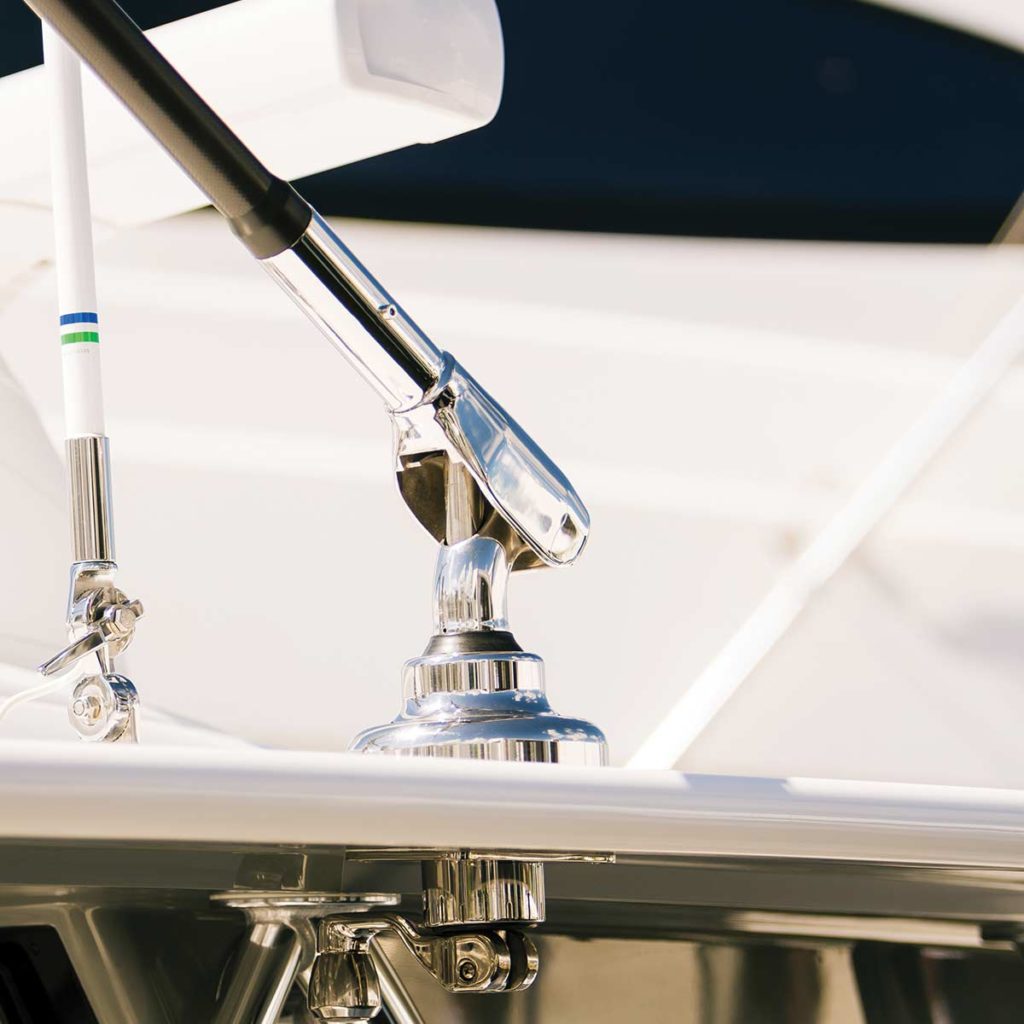
One great idea that Fawcett shared was the concept of connecting your rigger halyard pulley close to the console and T-top uprights, and then guiding the halyards straight up and over to the edge of the T-top. The clips are still high, but this makes retrieval much simpler because it’s right in line with your console. Whether you connect the halyard pulley to the edge of the top or somewhere farther inboard, the intention is to get it as close to you as possible while still being able to get under it without having to pass the rod outboard as you move forward toward the bow.
Teasers and Dredges
Conventional or electric reels riding on the top are your best option to maintain full walk-around capability, but you need to be sure to place them as far forward as possible to avoid interference when clipping the main line to the rigger. I have even put bent-butts closer to the bow with a top shot, and clipped a short line and pulley to the rigger.
Another alternative would be to attach a retrieval line with a pulley to the covering board so that you can quickly adjust the height of the teaser line and help with retrieval. This setup is great because you can do it on anyone’s boat. But they still get in the way to some degree, so a teaser reel attached to the top is nevertheless the best option. If you use electric reels for your teasers, you can rapidly get them in—or assign someone to the task—so that by the time your angler is tight on a fish, he can easily move to the bow, leaving out the rest of the spread to get another bite.
Dredge-fishing has grown increasingly popular over the years, and now center-console owners are looking for better ways to effectively fish a dredge or two from their rigs. Although doing so does somewhat complicate the situation—not only in setup, but also by limiting the simplicity of fighting a fish—being able to do so will definitely produce more bites.
So, now the question is: How can you set up your boat for a dredge but still get it out of the way quickly when tight on a fish? Electric reels. An electric downrigger with an auto stop or an electric reel paired to a bent-butt are both good setups when working with dredges.
The newly marketed dredge booms are designed to fit into a conventional bent-butt 80-pound outfit, so this is a great option for center-consoles. Each manufacturer’s design is a little different, so do some research and consider the options to decide which is best for your boat and fishing style.
Keep in mind that with the dredge boom extended, there is a lot of stress on the base, so a safety line should always be run from the boom to a forward cleat. With the correct pulley setup, and a quick-connect on your safety line, it’s possible to reel up the dredge, disconnect your safety line, and swing the dredge in the boat to keep it out of the way of the action. Or just leave everything set with your dredges hanging and put the angler on the bow to take full advantage of your spread that is still fishing.
Read Next: If you want to learn to catch more fish, you need lots of practice.
When you’re ready to join the small-boat dead-baiting revolution, the most important thing is to keep things simple and get your angler to the bow. Center-consoles are made to be versatile and increase fishability, so we must not lose sight of that fact—even though they continue to get bigger. With the growing trend of companies producing stronger, more-robust products that help us remain competitive, especially in the dead-bait dimension, the options will soon be virtually endless.
Be sure to explore the variables that will work best with your program, and then decide how to make it happen while keeping it as simple as possible. After all, complexity rarely works on any fishing platform, no matter how big it is, so fish simply and keep yourself tight. After all, that is the goal.

